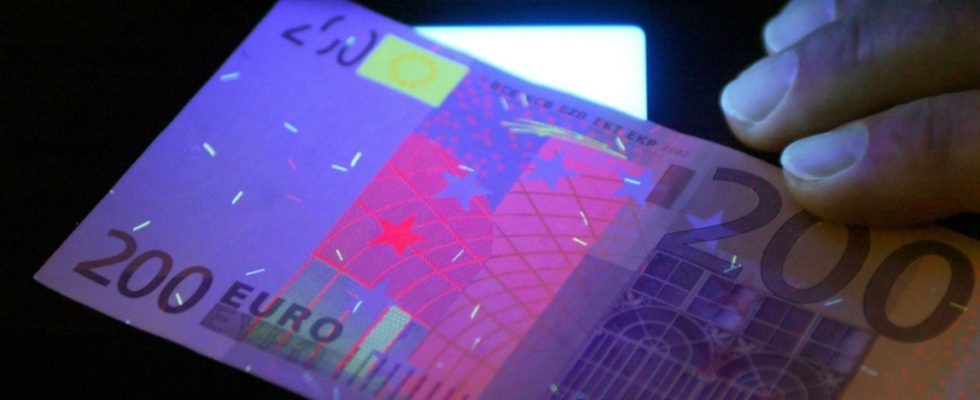It’s expensive if you get a counterfeit bill because you can’t get it replaced. That’s why shops and banks work with appropriate testing devices. Nevertheless, some flowers still slip through. In total, almost 56,600 counterfeit euro banknotes were withdrawn from circulation in Germany in 2023, as the Bundesbank announced on Monday. That was a good 28 percent more than a year before. “The increase in the number of counterfeit money is due to a few larger cases of fraud, primarily involving counterfeit 200 and 500 euro banknotes,” said Bundesbank board member Burkhard Balz, who wanted to reassure the population: “Despite the significantly higher number of counterfeits, the risk for normal citizens is “Coming into contact with counterfeit money remains low,” said Balz.
According to calculations by the Bundesbank, on average there would be seven counterfeit banknotes for every 10,000 inhabitants in Germany in 2023. “The numbers are far away from the all-time high of 2015,” said Balz. At that time, 95,400 flowers were taken out of circulation in Germany. Although the production and issue of 500 euro notes stopped in 2019, the notes still in circulation are still legal tender – at the same time, many shops minimize their risk by informing customers not to accept 500 euro notes.
Around a dozen fraudulent transactions involving luxury goods such as jewelry, gold bars, watches and cars meant that the amount of damage caused by counterfeit money in 2023 was 90 percent higher than in the previous year. It almost doubled from 2.7 million euros in 2022 to 5.1 million euros last year. The highest calculated damage caused by counterfeit money in Germany occurred in 2004 at 6.1 million euros.
The ECB wants to introduce even more counterfeit-proof banknotes in 2029
The Bundesbank recommends checking suspicious banknotes using the “feel, see, tilt” principle. With most euro banknotes, the banknote paper feels firm and firm. In this way, simple counterfeits could be identified by touching them. “The watermark can be seen as a shadow image in the unprinted area of each note when you hold it up to the light,” said the Bundesbank. Furthermore, the hologram elements would change when the banknote was tilted. It is generally advisable to compare a suspicious banknote with one that is undoubtedly genuine. The ECB is planning to introduce new banknotes in 2029 – these should then be even more counterfeit-proof.
The Bundesbank also recorded a significant increase in counterfeit coins in 2023. Almost 115,900 pieces were withdrawn from circulation, compared to just under 73,400 the year before. The Bundesbank explains this primarily by the fact that some companies collected suspicious hard money over a long period of time and only submitted it to the Bundesbank last year. In addition, counterfeit two-euro coins were increasingly appearing. In Europe as a whole, the number of Euro flowers seized last year also rose significantly by 24.2 percent to 467,000. On average, there were 14 counterfeit notes for every 10,000 inhabitants. The volume of damage increased year-on-year from 21.5 million euros to 25 million euros.

